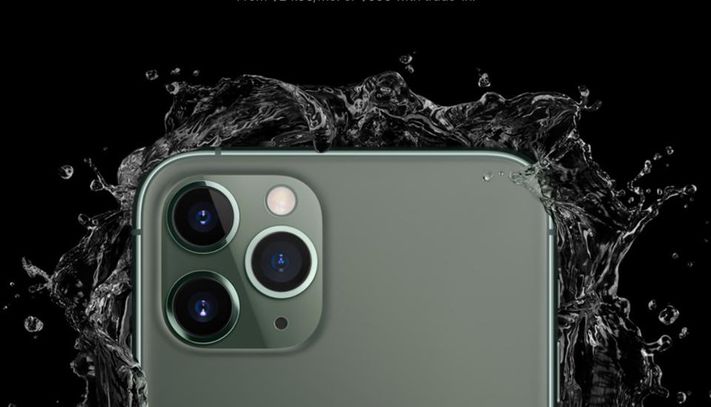Water resistance of the iPhone 11 pro and pro max
Explanation of the iPhone 11 Pro and Pro Max water resistance rating.
The iPhone 11 Pro and Pro Max are certified water resistant, and while that means they are protected, it does not mean they are waterproof.
The iPhone 11 Pro and iPhone 11 Pro Max are splash, water and dust resistant, as determined by lab testing. Apple has been making water-resistant phones since September 2016, starting with the iPhone 7 and iPhone 7 Plus, which received an IP67 rating, meaning they are protected to a maximum depth of 1 meter, for up to 30 minutes. Apple products are rated according to the International Protection (IP) rating provided by the International Electrotechnical Commission (IEC). The water resistance rating can be intimidating for a technology novice to understand, but it is not difficult to grasp once you break down the various components.
The letters IP are followed by two numbers, for example, IP67. The first number after IP indicates a product’s protection against solid objects such as dust and sand – 0 to 6 – and the second number indicates protection against liquids – 0 to 8. More the number is higher, more the product is protected against solids or liquids. Therefore, a rating of IP67 is a good rating and means that the product has full protection against dust and the effects of temporary immersion between 15 cm – 1 my, up to 30 minutes. The iPhone SE, Apple’s most affordable iPhone to date, received an IP67 rating.
When Apple tested the iPhone 11 Pro and iPhone 11 Pro Max in controlled laboratory conditions, both devices received an IEC rating of IP68 with a maximum depth of 4 meters, up to 30 minutes. Compared to previous models, this is a very good rating. However, the rating does not mean that the iPhone 11 Pro and iPhone 11 Pro Max are waterproof. Instead, it means they are more protected against extended periods of submersion under pressure. Resistance to non-permanent conditions may be reduced by wear and tear. The iPhone 11 Pro and iPhone 11 Pro Max are resistant to accidental spills from everyday beverages. That said, if an accidental spill occurs, rinse the area with tap water and dry the iPhone by wiping it with a lint-free cloth.
How To Protect The iPhone 11 Series
The worst thing a person can do is intentionally submerge their iPhone 11 Pro or iPhone 11 Pro Max in water. Apple recommends avoiding complete submersion, as well as water-related activities such as swimming, bathing, showering, or any other high-speed water scenarios, and steaming. Other prohibitions include exposing the iPhone 11 Pro and Pro Max to extremely hot, cold or humid temperatures, dropping it or disassembling it. Other liquids that should be kept away from the iPhone 11 Pro and Pro Max include detergents, oils, solvents; again, if any of these fluids come in contact with the phone, simply rinse the area with tap water and dry the iPhone by wiping it clean.
To remove excess liquid from the Lightning connector, gently tap the iPhone against your hand while the Lightning connector is facing down. You can use some airflow to dry the iPhone 11 series as long as it is not hot, such as air from a hair dryer. Direct the airflow to the Lightning connector for more effective drying. Never insert foreign objects into the Lightning connector in an attempt to speed drying, e.g. tissue paper, cotton swabs, etc. Apple also recommends waiting up to five hours before connecting anything to the Lightning connector, although wireless charging is possible. If you make sure the iPhone has been properly cleaned beforehand. Checking to see if liquid got into the microphone or speaker is as easy as placing the iPhone face down on a lint-free cloth and seeing if water drips. However, the main takeaway here is to remember that water resistant does not mean waterproof, and this applies to all devices, not just Apple’s iPhone 11 series.
